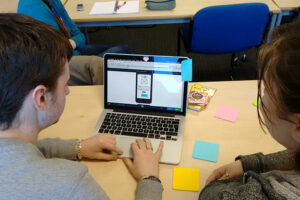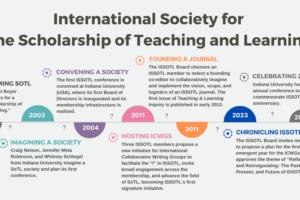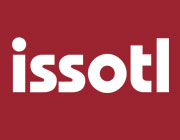ISSOTL Strategic Plan Draft
- Posted by ISSOTL Admin
- Categories News
- Date October 18, 2019

Introduction: Fifteen Years of Creating Community
ISSOTL was founded in 2004 by an interdisciplinary and international group of Scholarship of Teaching and Learning (SoTL) scholars. Their shared commitment to teaching and learning has guided the ISSOTL mission since. Our mission statement reads:
The International Society for the Scholarship of Teaching and Learning, Inc. serves faculty members/academics/scientific personnel, academic staff, and students who care about teaching and learning as serious intellectual work. Through building intellectual and collaborative infrastructure, the Society supports the associational life that fosters scholarly work about teaching and learning. The Society provides this support by:
recognizing and encouraging scholarly work on teaching and learning in each discipline, within scholarly societies and across institutional types,
promoting cross-disciplinary conversations to create connections and prompt new lines of inquiry,
facilitating the collaboration of scholars in different countries and the flow of new findings and applications across national boundaries,
encouraging the integration of discovery, learning, and public engagement, and
providing leadership in higher education for the support, recognition, review, and appropriate uses of the scholarship of teaching and learning.
In this, our fifteenth year, the board of directors of ISSOTL decided it was time to take a more strategic approach to our society’s growth and development in ways that highlight our mission and our core values of diversity and inclusion. We ask that members reading this draft consider the objectives we have set forth in the context of ISSOTL’s mission and values and offer comments that we can include in our discussion of the final version of the plan, which we will adopt at the annual meeting of the board in October 2019.
ISSOTL in a Changing World
Boyer’s thinking about a ‘scholarship of teaching’ planted the early seeds of SOTL thirty years ago. In that time, the landscape of higher education has transformed in ways Boyer could not have predicted. The Internet fundamentally upended how we relate to knowledge and how humans connect globally in ways that have reshaped teaching and learning in higher education. We have also experienced shifts in the geopolitical and environmental landscape that both influenced our practices as scholars in our given countries and raised questions about the purpose of what we teach and how education might contribute to a socially just and peaceful world amidst increased economic and social inequalities.
A commitment to teaching and learning as serious intellectual work as well as good practice has been, and will continue to be, a guiding principle for ISSOTL. How we maintain that commitment in a rapidly changing world is one of the central questions guiding our approach to strategic planning.
Amid all the changes of the past three decades, the Scholarship of Teaching and Learning has flourished and ISSOTL has blossomed from an idea into an international society that hosts an annual conference, connects SOTL scholars — including students — internationally, and publishes an open access journal, Teaching and Learning Inquiry, committed to the highest standards of research and writing about SOTL, and recognizes excellence through our ISSOTL Fellows program. The goodwill and volunteerism of our members has helped ISSOTL thrive.
This draft of our strategic plan is the first step in a planning process for ISSOTL as we imagine what our organization will look like and how it will evolve in the coming decade. In the spirit of collaboration and active member participation that has characterized our first 15 years, we invite all our members and friends to engage with us using the brief survey mentioned in the email you received to set the direction for the next decade.
Governance and Administration
ISSOTL is administered by a volunteer Board of Directors, elected by its members for various purposes (e.g. representing regions and students) who typically serve three-year terms. The Board includes a Treasurer and a Secretary who are elected to those roles. The ISSOTL Board members are guided by the bylaws of the organization (available here). As a relatively young organization, ISSOTL continues to make changes in these bylaws to bring them into alignment with the needs of the society. All changes to the bylaws except clarifications of wording and other similarly minor changes must be approved by a vote of the membership.
ISSOTL is led by a president who is elected by the membership to serve a three-year term, first as president-elect, then as president, and finally as past president. Thus, the ISSOTL presidency is a team effort carried forward by members serving in all three roles.
ISSOTL has a robust committee structure that helps to carry on the work of the organization. A complete list of committees and their functions and current members is available here. A series of member-driven special interest groups or SIGs connect people who share a passion for certain topics or practices (e.g. undergraduate research, ISSOTL in the humanities ). At any given time, there are ad-hoc groups comprised of members working on specific initiatives (e.g. international collaborative writing group working party) not visible in the ISSOTL matrix of standing committees and special interest groups.
Paid staff of the organization include a part-time administrative assistant, largely responsible for arranging board meetings and keeping minutes of those meetings, an editorial assistant for TLI, a part time operations manager for the ISSOTL Fellows program, and a communications coordinator, largely responsible for managing the organization’s web presence. In addition to these positions, the board recruits and approves the (unpaid) co-editors and associate editors of our journal, Teaching and Learning Inquiry.
The ISSOTL board meets monthly online and face to face at the annual conference. ISSOTL also holds a members’ meeting at the annual conference. All ISSOTL members are invited to attend the members’ meeting each year.
ISSOTL Membership and Engagement
ISSOTL continues to grow as an organization. While our membership is distributed internationally, that distribution is uneven, with the largest cohorts of members residing currently in the United States and Canada, and the next largest cohort residing in Europe. This distribution is shaped, in part, by the location of the annual conference as we tend to grow in membership in regions hosting the conference (more so when hosted outside of the USA). One of the goals of this strategic plan is for ISSOTL to expand its membership even more beyond these three regions.
Finances
Through prudent management of our resources and careful attention from our treasurers, ISSOTL is currently financially stable. The Society has created a reserve of funds such that we could experience a conference that generated no revenue and still be able to host a second conference the following year (assuming this conference was revenue-generating). Funds beyond this point are slowly growing and the Society is now in a position to consider investing in longer-term strategic initiatives. One of the goals of the strategic planning process is to make critical decisions about the use of any surplus funds. In particular, we must decide whether and if so, when, to take on a full or part time staff person to run the organization as an executive director (or similar position).
In terms of Society revenue, we gain our principal revenue from membership fees, followed by conference income. Our final, albeit minimal, source of income is a seven-year fixed rate annuity currently held by the Society.
In terms of expenditures, the consistent costs for the Society include:
Ongoing Society maintenance fees. These fees include web hosting costs for both ISSOTL and TLI, banking and mailing fees, and Society-held insurance payments.
Contractual services rendered by paid staff (see above).
Support of ISSOTL initiatives and related work. These costs currently include the Student Bursaries for the ISSOTL conference, financial support for the International Collaborative Writing Groups, and the annual face to face Board meeting.
Publishing and Web Presence
ISSOTL publishes a high-quality open source academic journal, Teaching and Learning Inquiry, founded in 2012. The journal typically appears four times each year and highlights the excellent work in SOTL from authors around the world.
ISSOTL also maintains a website both as a resource for members and potential members and to advocate for SOTL online. The website provides members with access to information about the society and maintains a blog, curated by the Communications Committee, to which members may submit work on SOTL. The ISSOTL website underwent a significant transformation in the spring of 2019 that has substantially improved our ability to communicate with members and potential members and to highlight the work of the SIGs and others affiliates.
Affiliations and Partners
ISSOTL maintains working relationships with or connections to various regional initiatives and organizations interested in SOTL. These include Euro-SOTL, SoTL in the South, LatinSOTL, SoTL Canada, and SoTL Asia. One of the goals of this strategic planning process is to consider carefully how those relationships can and should evolve over time.
Annual Conference
The single most important activity of the Society is the staging of an annual conference in conjunction with local partners. Local hosts are chosen through a process that begins with a formal Expression of Interest (EOI) from potential hosts. These EOIs are reviewed against explicit and transparent criteria by the ISSOTL Conferences and Convenings Committee and those deemed sufficiently strong are encouraged to submit formal full proposals to host the conference. Each year, a host location is chosen from among those formal proposals by a vote of ISSOTL Board members. ISSOTL then works closely with the local hosts over a two-year period to stage the conference. One of the goals of this strategic planning process is to consider whether and how the current conference host selection process best serves the goals of the Society as we support the growth and development of SOTL internationally.
A Vision of the Future
Over the past year, ISSOTL Board members have engaged in an extended collaborative process to develop the vision for our future that follows below.
When we imagine ISSOTL at the beginning of our third decade in 2024, we hope:
to have a robust membership drawn from every world region and every continent,
to see much greater diversity in our membership, in all the ways we consider diversity, and in our leadership,
to continue to have a membership of faculty/academics/scientific personnel, academic staff, students, and others, across multiple disciplines and specialties,
to continue to have an inclusive culture that reimagines possibilities and challenges and taken-for granted assumptions about SOTL,
to diversify our publications and promote alternative ways of thinking about SOTL publication to reach new audiences,
to promote sustainable practices in all of our events and activities,
to employ staff who support the activities of the society, and,
to have a stable budget that makes possible our continued growth as an organization.
To achieve these goals, the ISSOTL board proposes to focus on the following goals and activities.
I. Diversity and Inclusion
Being international defines ISSOTL. The diversity of international perspectives brought to bear on teaching and learning as serious intellectual work is a resource that both enriches and advances ISSOTL. Yet, diversity is more than the region members come from or the country hosting the annual ISSOTL conference. ‘Country’ is only one dimension of the diversity ISSOTL promotes.
Another dimension of diversity that ISSOTL has openly welcomed is an individual’s role within an institution. The idea of the ‘SOTL big tent’ is the inclusion of faculty members/academics/scientific personnel and academic staff from a range of disciplines, as well as others such as curriculum designers, librarians, academic developers, and administrators engaged in SOTL work. Students, both undergraduate and postgraduate, as emerging scholars and learning partners are also important members of ISSOTL.
ISSOTL has a strong history of bringing together scholars from different disciplines and in different roles in higher education. By valuing transdisciplinary thinking about teaching and learning, ISSOTL helps our members see this heterogeneity of methods and heuristics as a strength of SOTL rather than as a form of contradiction.
Moving forward from 2019, how can ISSOTL build on its current commitment to diversity and inclusion to expand how we understand diversity and to be more inclusive?
Expanding our thinking about inclusion: Since its founding, ISSOTL has named discipline, institutional roles, and country as important dimensions of diversity. Going forward from 2019, ISSOTL will also name other important dimensions of diversity that will enrich and expand SOTL and will grow our social or cultural value. We intend to have a vigorous and ongoing conversation about diversity and inclusion that includes, but is not limited to race, ethnicity, language, disability, thought, culture, religion, sexual orientation, gender, and economic status.
Regardless of country, higher education institutions tend to be hierarchical structures where people with particular academic and social capital have an easier pathway through the educational system. Many ISSOTL members have a deep commitment to equity and inclusion in their classrooms, programs, and institutions. Even as we continue to seek to expand the geographic and disciplinary diversity of our society, ISSOTL commits to focusing our diversity efforts explicitly on issues of inclusion for members of equity-seeking groups: racialized members, disabled members, members from cultural and/or ethnic minorities, members with non-heteronormative identities, low socioeconomic status members, and members with caregiver responsibilities.
Questions that will guide this work going forward include:
How inclusive is ISSOTL for equity-seeking students and staff?
Who gets to shape the discourses of SOTL, how and why?
How are our current practices privileging and amplifying particular voices while excluding others?
How do we name and create space for equity-seeking people to shape SOTL and ISSOTL as an inclusive and diverse society moving forward?
Proposed actions
Name the dimensions of diversity that matter to ISSOTL moving forward;
Work closely with conference hosts to create program themes and select keynote speakers who reflect our values around diversity and inclusion;
Consider creating more specific conference guidelines around diversity and sustainability;
Engage in a critical review of the governance structure of ISSOTL to ensure that it reflects our values around diversity and inclusion, e.g., how does the current regional VP structure (and current naming of regions) influence our efforts to be more diverse?
Engage in a critical review of whether current understandings of “quality” SOTL place limits on our ability to increase diversity and inclusion. Are notions of what is and what counts as “quality” SOTL marginalizing or alienating certain voices?
Form genuine and mutually beneficial relationships with regional SOTL communities to enrich ISSOTL’s understanding of geopolitical contexts shaping SOTL around the world.
II. Promoting and Advancing SOTL
An essential goal of ISSOTL is to promote and advance the Scholarship of Teaching and Learning around the world. Given that SOTL is still a relatively new field of scholarly endeavor, that does not typically have an obvious home in many universities (i.e., a department or administrative center of its own), and as an intrinsically interdisciplinary field of endeavor, SOTL practitioners often struggle for acceptance of their work at the institutional level, where it is sometimes not recognized or valued, regardless of their national context. Promoting and advancing such a diverse field at an international level is challenging because SOTL resonates differently in different societies and within those societies at different types of educational institutions.
ISSOTL employs a number of strategies to achieve its goal of promoting and advancing SOTL globally:
Annual conference: Each year ISSOTL stages an annual conference in conjunction with a local organizing team. There are two primary goals of the annual conference: 1) provide those engaged in SOTL an opportunity to present their work to colleagues in a variety of ways; 2) grow the community of SOTL practitioners through face-to-face interactions. Giving members the opportunity to present their work at the annual conference has the additional benefit of providing them with evidence that their SOTL work is valued by an international society — evidence they can use on their home campuses to have their efforts recognized.
Publishing: ISSOTL publishes the open access journal Teaching and Learning Inquiry (TLI). This journal aspires to be a respected journal that leads in SOTL and provides ISSOTL members (and others) an opportunity to showcase their work in print. Publishing in TLI is clear evidence that one’s work is valued, evidence that can be used at members’ home campuses to claim credit for their work. ISSOTL will also continue to host International Collaborative Writing Groups at our annual conferences as a means of promoting a variety of voices in the writing and thinking about SOTL and supporting the development of capacity and collaboration among SOTL scholars.
Web presence: ISSOTL maintains a website (issotl.com) that provides ISSOTL members with opportunities to learn about the field and about various ISSOTL activities, and to connect with others engaged in SoTL work. A new version of the website launched in March 2019. ISSOTL also maintains an active Twitter account with more than 2,000 followers.
Support students: ISSOTL promotes the growth of SOTL through direct and indirect support of graduate and undergraduate students engaging in SOTL work. Direct support includes financial support for students attending the annual conference and annual student awards. Indirect support includes the use of the ISSOTL website to facilitate connections between students engaging in SOTL work and the work of the student-facing Special Interest Groups. Two student members also sit on the ISSOTL Board.
Advocacy: ISSOTL leadership, including the presidents and board members, are regular advocates for SOTL in a variety of venues, including public presentations, publication (print and online), and through social media.
Recognition: ISSOTL has recently created a Fellows scheme to expand our efforts to recognize excellence in SOTL work and to create a diverse global network of SOTL mentors. Each year ISSOTL presents one Society member with the Distinguished Service Award recognizing outstanding and long-term support for ISSOTL. ISSOTL also recognizes excellence among students engaged in SOTL through awards at the annual conference.
Questions that will guide our work going forward include:
What other forms of publication should ISSOTL support in addition to TLI? Can we make better use of the ISSOTL blog or other means for highlighting the work and diversity of our members? Should we consider publishing a conference proceedings volume after the annual meeting? Should we livestream keynote addresses at the annual conference?
How can ISSOTL make better use of our website and social media to promote and advance the field?
Can and should ISSOTL consider schemes of collaborative small grant making that support the growth of SOTL in places or among communities (e.g., marginalized voices) where support for such work is generally lacking?
To what degree should ISSOTL seek a closer relationship with regional or community-based SOTL organizations such as SoTL in the South, SoTL Asia, LatinSOTLor Euro-SoTL?
How can ISSOTL collaborate with other academic societies that recognize SOTL work, e.g., POD, ICED, HERDSA?
Should ISSOTL consider seed funding for early career scholars?
Should ISSOTL consider reviving something like the CASTL program of the Carnegie Foundation?
Proposed actions
Ask the Advocacy committee to engage in a comprehensive review of our strategies for promoting the field, with the goal of both increasing our diversity as a society and increasing the prominence of SOTL work in various contexts;
One year after the implementation of the new website, the Communications committee will engage in a critical review of both the functionality of the new site and the ways that it is helping to advance the field;
Make formal agreements with like-minded societies for increasing the visibility of ISSOTL at their annual meetings;
Encourage a closer relationship between ISSOTL and the various regional SOTL initiatives and organizations around the world;
Bring together a group of graduate and undergraduate students and ISSOTL board and general members to discuss strategies for growing our support for students in SOTL.
III. Strengthening Our Society
People dedicated to SOTL are engaged individuals. This is especially true for those playing vital roles in the ISSOTL organization as board members, members of committees, editors of and reviewers for TLI, conference planners, and especially the Treasurer, Chair of the Communications Committee, and Secretary. All of these individuals are engaged in SOTL at local, national, and international levels. A strength of ISSOTL is the many members who play more than one role in the organization–as board members and committee members, as committee members and peer reviewers, etc. These overlapping efforts make the organization very effective because information flows easily through a small number of people. But they also make the organization both vulnerable and closed. It is vulnerable because some positions, such as Treasurer and Secretary, impose a heavy workload on one volunteer who carries with her the institutional history of that role and the expertise necessary to carry it out. ISSOTL is also a closed organization because any organization with so many people playing dual or triple roles is also an organization that is self-contained. An international organization of 500 members consisting of perhaps 25 people in different leading positions doesn’t seem sufficiently inclusive and inviting to newcomers. When a high level of work is performed by a small number of people, that work can also appear too difficult or time consuming to potential volunteers.
By being an organization reliant on a small group of volunteers, we risk wearing out the people involved in SoTL work, and we do not give enough people the chance of experiencing the benefits and joys of working together with international colleagues on a common cause.
Questions that will guide our work going forward include:
How can we engage more people in ISSOTL at the organizational level?
How can we divide the work needed by ISSOTL in ways that reduce the workload of a few individual volunteers while keeping people motivated and recruit new members of boards and committees?
How can we ensure that we are taking full advantage of the diverse skills and interests of our volunteer board and committee members while also creating circumstances that provide those volunteers with professional challenges that are rewarding to them?
How do we structure the work of the society’s leadership so that continuity as well as inclusivity is insured?
Have we reached the point where we need to hire more professional staff, either full or part time, to manage things like the conferences?
Proposed actions
Analyze workloads in the ISSOTL board, committees and SIGs and restructure as necessary to facilitate more manageable workloads for volunteers.
Clarify the role of committees and SIGs and determine the degree of decision-making authority given to each.
Grow ISSOTL paid membership to 1,000 and encourage long-term memberships, e.g., members who maintain active memberships for at least three consecutive years.
Create a fiscal plan whereby ISSOTL can have paid staff within five years (either full or part time), who manage critical operations of the society, such as finances, membership, communications, and conference planning in consultation with relevant board committees and the presidential team.
Share your feedback (feedback survey closes August 31, 2019).
Previous post
Looking Forward to a Conversation between Elizabeth Minnich and Four ISSOTL Members
You may also like

2024 Emerging Scholars Fund

Online Webinar | May 23, 2024


